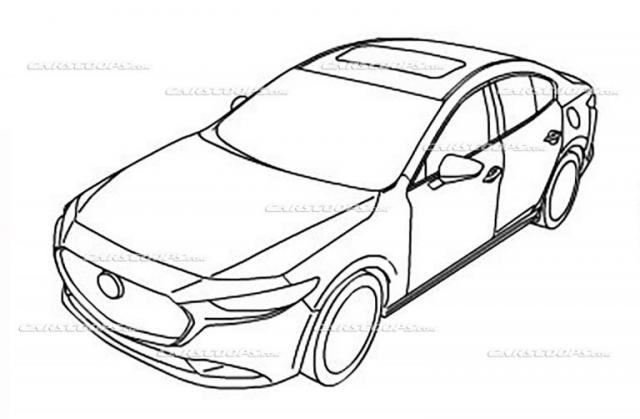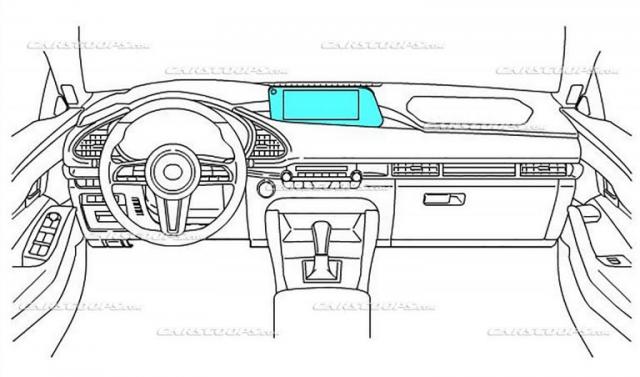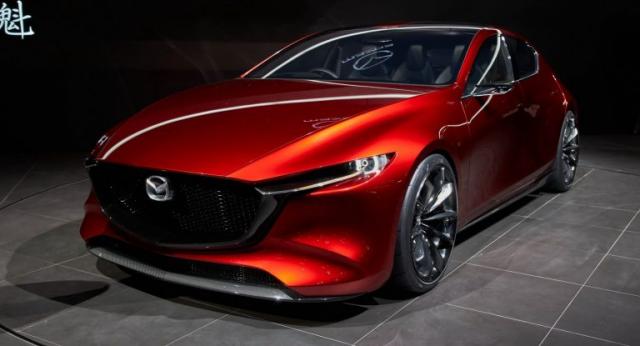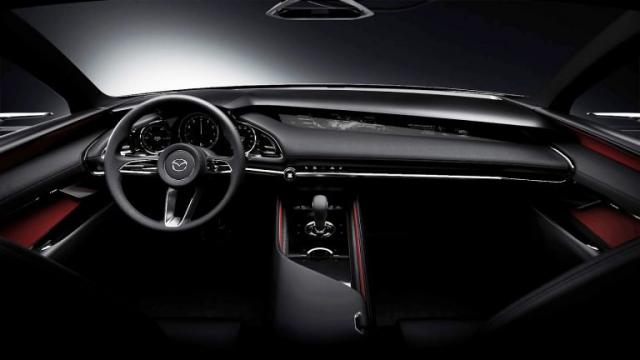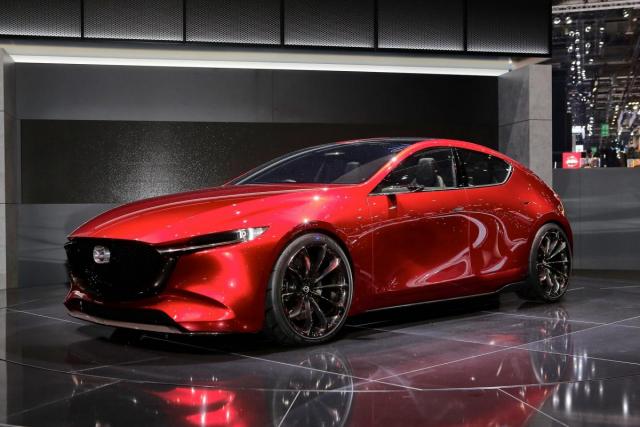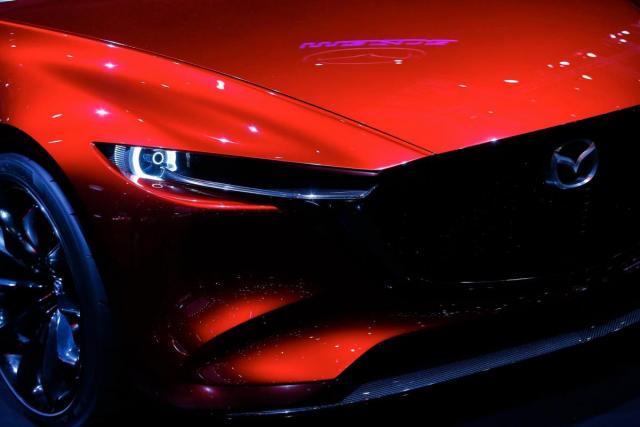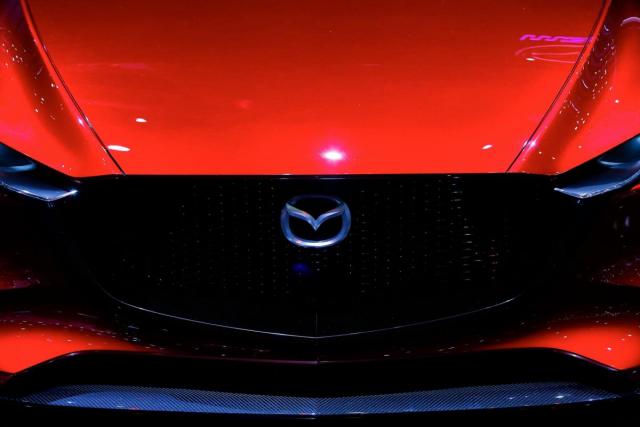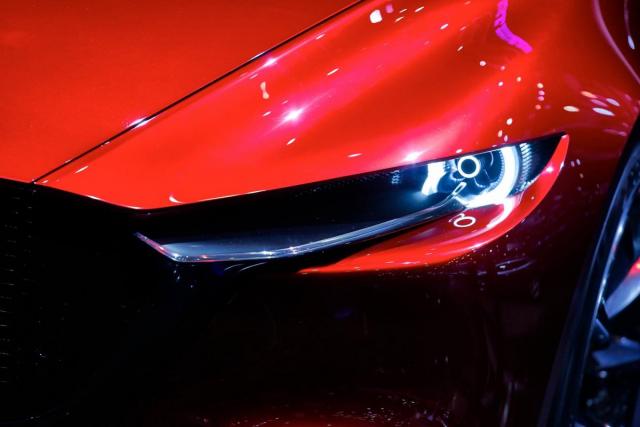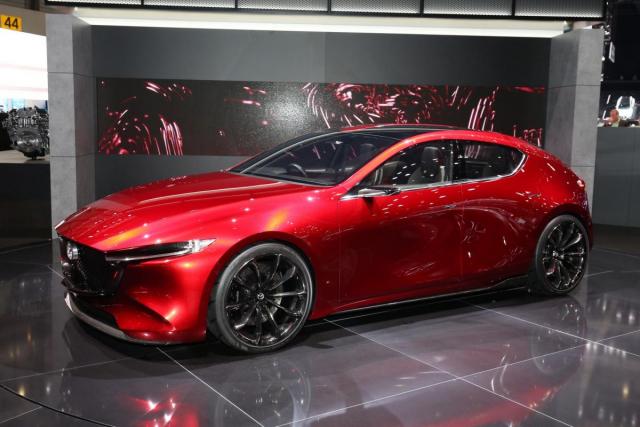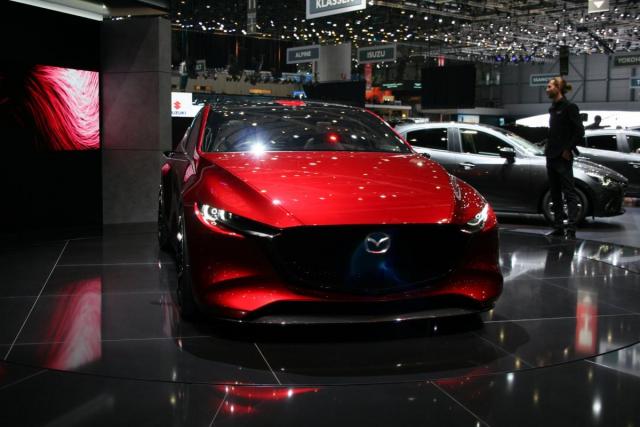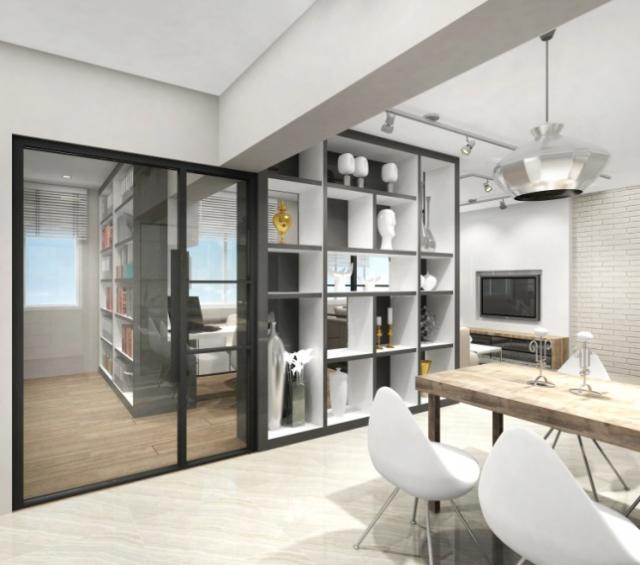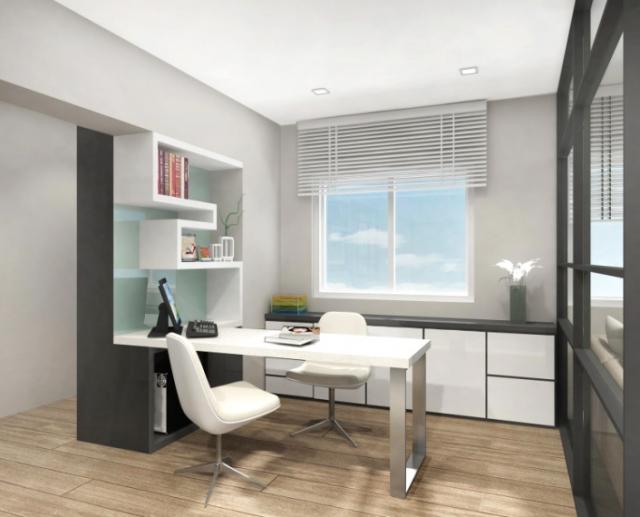Search the Community
Showing results for tags 'concept'.
-
Another EV to many of us, but it's the first in a series of zero emission battery electric vehicles (BEVs) from Toyota. And it will be on sales from mid of next year. Toyota fans rejoice! Toyota bZ4X Concept is the first model to feature Toyota's new bZ - beyond Zero - naming convention. By 2025, Toyota aims to introduce 15 battery electric vehicles, including 7 Toyota bZ models. The 'bZ' is an acronym for 'beyond Zero', reinforcing Toyota's commitment to not only achieving zero carbon emissions and carbon neutrality, but also going beyond to realise new benefits for the environment, for individuals and for society as a whole. The bZ4X Concept, a medium-size SUV with all-wheel drive, is integral to Toyota's transition from a pure car company to a business dedicated to delivering better mobility for all. It was developed by Toyota Motor Corporation in partnership with Subaru Corporation, drawing on the specific skills and experience of each company. Sales of the production version are expected to commence around the middle of 2022. Toyota bZ4X Concept will be available with a world-first combination of a steering yoke and a steer-by-wire system. This technology gives the driver greater control, removing interference from rough road surfaces and braking, thereby giving a more precise response in line with the vehicle's speed and steering angle. Steer-by-wire also dispenses with the traditional, circular steering wheel, replacing it with a uniquely shaped steering yoke which eliminates the need for the driver to move their hands around the wheel as they make a turn, adding to the car's fun-to-drive quality.
- 115 replies
-
- 16
-

-
<Designer Of The Mazda Miata, Shunji Tanaka, Dies Aged 75 Thanks for everything, Tanaka-San. Shunji Tanaka, the chief designer of the original (NA) Mazda MX-5 Miata, has passed away. The announcement was made on Facebook by a close friend and chairperson of the MX-5 Club Tanaka was a member of, Mr. Katsuyuki Satake. A translation by a fellow enthusiast alerted CarBuzz to the news with a simple statement, "I'm so sorry to announce that Mr. Tanaka, the Chief Designer of NA MX-5 has passed away on Dec. 12th at the age of 75." Apparently, Mr. Tanaka's last words were, "I have no regret in my life." It's unclear what Tanaka died of, but he was right, not having any regrets. He gave the world the seminal small sports car. The Miata is the Porsche 911 of small sports cars and has a legacy and reputation some manufacturers can only dream of. Mazda Friends Of MX-5/Facebook Mazda Mazda Mazda It remains the world's best-selling sports car and one of the most affordable ways for automotive enthusiasts to have fun. Mazda may be moving over to hybrid power for the MX-5 in future, but we're sure the fun element will be retained. For now, it remains true to its origins. Despite being head designer of the Miata, Tanaka did not get as much attention as the lead engineers, Toshihiko Hirai and Takao Kijima. These two men were responsible for making the Miata the epic driving tool, while Tanaka was responsible for the exterior and interior design. While the Miata certainly deserves praise as a driving tool, the design is as much a part of a very successful and lucrative roadster. Before the Miata came along, the roadster had all but died out. It continued the ethos of British roadsters but rectified their build quality and reliability issues for a complete package like no other. Friends of MX-5 Miata/Facebook Mazda MX-5 Miata 25 years The NA Miata was such a hit, an entire book was written about it when it turned 25. As you can see, the famous pop-up headlights and smiling face were always a part of the design, inspired by the Lotus Elan. According to Tanaka, the concept for the Miata was a "Swinging Time Machine." In short, it was a symbol of freedom and meant to provide a thrilling open-top experience that brought the driver closer to nature. Many people don't know this, but the first concept was designed in California. Mazda approved the project, which sparked the initial design phase. After completing the project, it was shipped to Japan, where a disapproving Tanaka met it. Mazda MX-5 Miata 25 years MX-5 Miata Forum MX-5 Miata Forum According to interviews with Tanaka, he thought the design was too Americanized, and there was no way to identify it as a lightweight sports car. He didn't beat around the bush. He also said the US team must have "eaten too much steak and forgotten the delicacy of Japanese cuisine." You can see the difference between the California concept and Tanaka's clay model in the photos above, with the redesign taking influence from his wife's love of Japanese Noh masks that seemingly change expression depending on the angle they are viewed from. Whether his comments were too harsh or not, history speaks for itself. The NA Miata is a driving and design icon, and Shunji Tanaka was responsible for half of that. Rest in peace Tanaka-San. Your legacy lives on in the heart of every Miata fan. Kenji Matsuda/Facebook Friends of MX-5 Miata/Facebook 佐竹克行/Facebook 佐竹克行/Facebook>
-
Honestly, a SUV is the least I am expecting from the French maker since their forte is with light weight sport cars. But if Lotus could have the Eletre, why not for Alpine? Although it's only a concept at this stage but a production version will follow next year, said Alpine. Just like Ferrari is refusing to call the Purosangue an SUV, Alpine doesn't use the acronym too. Instead, it's a "sport fastback." The sloping roofline make it look like the SUV had a one night stand with a coupe. As this is only a concept, the Renault-owned marque can get away with not giving the A390_β a conventional B-pillar. However, that won't be the case for the production model. In addition, the suicide doors won't make it to production as well. Alpine does promise the final car will retain around 85% of the exterior design though. Technical specifications are limited at this point but from the rumors mill, the production model will feature three electric motors, with one sitting at the front and the other two at the rear, enabling all-wheel drive. It won’t be a permanent AWD setup, which suggests the front-mounted motor can be decoupled for a more tail-happy experience. Active torque vectoring is promised for a more engaging drive. The A390 will be the second EV from Alpine, following the A290 hot hatchback. The latter is essentially a high-performance version of the reborn Renault 5. There are also plans for an A310 coupe, a bigger four-seat sports car to take on the Porsche 911 but with an electric setup. By the end of the decade, Alpine intends to have no fewer than seven EVs in its growing lineup. A supercar was recently confirmed and it'll either be entirely electric or will feature a hydrogen-fueled combustion engine.
-
Official drawings of the 2019 Mazda3 – keep in mind that at this time, we don’t know if it will be sold as a 2019MY or 2020MY in the U.S.A. and Canada. The new “3” will employ Mazda’s latest Skyactiv-Vehicle Architecture. The platform is said to be stronger while providing a much better ride quality. But the big news for the fourth-generation “3” is the debut of Mazda’s new SkyActiv-X gasoline enginefeaturing Spark Controlled Compression Ignition. This innovative four-cylinder unit combines characteristics of diesel and regular gasoline engines, using spark plug ignition to “control compression ignition”. In short, it ignites the fuel-air mixture similar to a diesel engine promising to combine the fuel efficiency of the former with all the benefits of a gasoline unit, without the emissions penalty. Mazda forecasts an output of around 190 horsepower with 170 lb-ft (230Nm) of peak torque from the 2.0-liter version. That puts it well above today’s 2.0-liter Skyactiv-G that delivers 155hp and 150 lb-ft (203Nm) and on par with the bigger 2.5-liter Skyactiv-G with 184hp and 185 lb-ft (250Nm). The difference here is that Mazda is targeting at least a 20 percent improvement in fuel economy and up to 25 percent less carbon dioxide emissions over the current Skyactive G engines. Mazda Kai Concept Wants To Get Our Hopes Up For New Mazda3
-
Kia Concept EV9 if officially previewed as a large and boxy electric SUV. This EV9 Concept will be officially unveiled at the Los Angeles Auto Show on 17 Nov 2021, together with the Hyundai Seven Concept (preview of the upcoming Ioniq 7).
- 16 replies
-
- 13
-

-
Lexus UX crossover revealed with aggressive design and new infotainmenthttps://www.autocar.co.uk/car-news/motor-shows-geneva-motor-show/lexus-ux-crossover-revealed-aggressive-design-and-new Lexus has claimed that its upcoming UX crossover, which has just been revealed with new images, will be as agile as a hatchback thanks to an all-new platform with a low centre of gravity. Images of the car's exterior and interior have been released ahead of its public debut at the Geneva motor show, showing that it will also be one of the brand's most aggressive-looking models. Inside, there's a new widescreen infotainment system that appears related to the one used in the Lexus LS. The small SUV, which brings the fight to the Jaguar E-Pace andMercedes-Benz GLA, stems from the UX concept, which was revealed at the Paris motor show in 2016. The UX will be powered by a mix of internal combustion engine and traditional hybrid powertrains, as proven by Lexus’s trademarking of UX200, UX250 and UX250h monikers following the concept’s reveal. This suggests the car will share engines with lower-end NX SUV models and the ageing CT hatchback. It is thought that the UX will eventually replace the CT. Features of the production car will be toned down from those of the concept; the large, intricate wheels and door cameras in place of mirrors are the first to go. Rivals range in length from 4400mm to 4450mm, so it’s likely that the UX will sit somewhere in the middle. Prices have yet to be confirmed, but its closest competitors are priced £29,000-£35,000. The NX occupies the lower end of the segment’s price range, so it’s likely that the UX will do the same, with a price tag of less than £30,000 expected. The Lexus RX L, a seven-seat version of its large SUV featuring three rows of seats, will make its European debut at the show, alongisde the Lexus LF-1 Limitless concept, first revealed at the Detroit motor show in early January.
-
This concept was shown early part of last month, and there is only 1 reason I did not post it till date: Its ugly nose job, which I hope it is an one off design effort, BUT... BMW Concept 4: Chris Bangle Come Back, All Is Forgiven BMW has previewed the design of the forthcoming M3 and M4 with the launch of the BMW Concept 4 at the Frankfurt Motor Show. It shows that the new 4-Series will be a radical departure from its predecessor and have a face dominated by a kidney grille so big it could swallow two children. If only Chris Bangle (who, at the time, got his fair share of flak) was still designing Bimmers… The German car manufacturer’s press release appropriately starts out by discussing that grille. According to BMW, “the vertically oriented grille fits seamlessly into both the proportions of the front end and BMW’s illustrious past” and it evokes classics such as the 328 and 3.0 CSi. “The kidney grille has always been a signature feature of BMW cars,” added head of BMW Design Domagoj Dukec. “The BMW Concept 4 presents a confident and classy take on this iconic feature. At the same time, the BMW Concept 4 offers a look ahead to the expressive face of the 4 Series range.” Looking past the vertical kidney grille are slim and aggressive laser headlights as well as huge air intakes to gulp down air. The Concept 4 also features particularly expressive sides and slim, two-section mirrors that are partly finished in polished aluminium, as well as 21-inch wheels with a five-spoke pattern. As controversial as the design of the front may be, we suspect people will be more accommodating for the rear fascia. The most noteworthy feature out back are the flowing LED taillights, an angular bumper with a gloss black diffuser and large, rectangular-shaped chrome tailpipes.
-
Been a late comer to the EV era, I think this show hand / all-in moment is Toyota way of playing catch up (heh look here, I have everything ready ok!)... But the fact remain that they are quite far behind other big names from Europe, Korea and China. During the media briefing on battery EV strategies, Akio Toyoda shocked the automotive world by unveiling 15 fully electric concepts previewing future models of Toyota and Lexus. What must be the largest rollout of concept cars in history includes everything you can imagine, from city cars, sedans, SUVs of all shapes and sizes to pickups and sportscars. Some of them are based on existing models, but there are also several all-new vehicles based on the EV-dedicated e-TNGA architecture. The “showroom of the future” as Akio Toyoda called it, had a bunch of other EVs hiding behind the curtain. The lineup for the Lexus brand includes its first dedicated EV called the RZ which is the production version of the LF-Z Electrified concept. Then there is a sports battery EV that looks like the spiritual successor of the LF-A with an expected cruising range of over 700 km (435 miles) thanks to solid-state batteries, and an expected 0-100 km/h (0-62 mph) acceleration in the low 2-second range. Additionally, we saw full-size prototypes of a large SUV (Lexus Electrified SUV) and an unnamed Lexus-branded sporty sedan. The latter also appeared in hatchback form in the official renderings, alongside a 2+2 cabriolet featuring similar styling. Last but not least, Akio Toyoda showed us another series of models calling them “the diverse Toyota EVs”. These include commercial vehicles like an autonomous shuttle bus, a compact van designed for both business and leisure, and a versatile urban EV. The Compact Cruiser EV incorporates styling features from the FJ Cruiser in what could become an off-road-focused five-door EV. Next to it, there is Toyota’s first electric dual-cab pickup which appears to be similar to the Hilux or the Tacoma in terms of dimensions but gets modern design features inspired by the larger Tundra. The Small SU EV looks like an electric CH-R with a dynamic styling approach, while the Crossover EV is slightly larger and more subtle in terms of exterior design, likely previewing Toyota’s entry into the C-SUV segment. Finally, there is an EV sportscar with mid-engined proportions and a two-seater cabin which could become the future MR2 serving as Toyota’s treat for petrolheads. T.B.C.
- 27 replies
-
- 13
-

-
.png)
-
A preview of the upcoming T-Class, scheduled to be launched in 2022. At 4.95m (L) x 1.86m (W) x i1.83m (H), this is NOT a compact MPV or anything close to the outgoing Citan... Mercedes-Benz EQT Concept Mercedes-Benz EQT Concept With the Concept EQT Mercedes-Benz Vans is giving a tangible impression of the first premium vehicle in the small van segment for families and private customers keen on leisure activities: the T-Class and its fully-electric variant. The near-series-production concept vehicle combines ample and versatile space for up to seven occupants and a generous luggage compartment with a Mercedes-typical design and approach to high-class appeal, comfort, functionality, connectivity and safety. Mercedes-Benz Vans is thus translating the V-Class's recipe for success into a compact format, bringing a new premium quality into the small van segment. The Concept EQT underscores the unique combination of premium comfort and uncompromising functionality with electric driving pleasure with an electric longboard which is perfectly integrated into the load compartment. "We are expanding our portfolio in the small van segment with the forthcoming T-Class. It will appeal to families and all those private customers, whatever their age, who enjoy leisure activities and need a lot of space and maximum variability without forgoing comfort and style. The T-Class provides them with an attractive introduction into the world of Mercedes-Benz. And as the Concept EQT shows: We are consistently implementing our claim to leadership in electromobility and will also be offering a fully electric model in this segment in the future," says Marcus Breitschwerdt, Head of Mercedes-Benz Vans. Brand-typical design with a high degree of value appeal The Concept EQT is immediately recognisable as a member of the Mercedes-EQ family. Its design is distinguished by balanced proportions and a sensual surface design. Muscular shoulders and striking wheel wells underline the vehicle's power and emotive appeal. The characteristic black panel front with LED front headlights flows seamlessly from the bonnet and gleams with a star pattern. The different-sized stars with a 3D effect are featured throughout the vehicle from the front and the 21-inch light-alloy wheels with a high-sheen finish to the panoramic roof and the electric longboard in the rear. There is also a light strip which connects the LED headlamps with the LED rear lamps. This in combination with the vehicle's paintwork in high-gloss black creates a fascinating contrast, resulting in aesthetics of a particularly high quality. "The Concept EQT is a new, holistic van with the Design DNA of "Sensual Purity", says Gorden Wagener, Chief Design Officer Daimler Group. "Sensuous shapes, elegant trims and sustainable materials show that this van clearly belongs to our Mercedes-EQ family." The interior of the Concept EQT is as much an emotional and stylish statement as its exterior - characterised by an elegant contrast of black and white. The seats are upholstered in white nappa leather; the plaited leather applications on the seat centre panel comprise recycled leather. The instrument panel in a sensual design is particularly eye-catching. The upper section is shaped like a wing profile with the appearance of a seashore pebble and fuses dynamically with the instrument cluster. A practical semi-closed stowage compartment is located above the instrument cluster for easy access to important utensils or documents. In addition, round air vents in high-gloss black, galvanised trim elements and the multifunction steering wheel with Touch Control buttons underline the high quality, modern appearance. The ambient lighting on the centre console, doors and in the foot well creates a stylish atmosphere. Intuitive, self-teaching MBUX infotainment system With the MBUX infotainment system (Mercedes-Benz User Experience), Mercedes-Benz is bringing the innovative operating and display concept to the small van segment. The system can be conveniently operated using the free-standing central display with touch function, the touch control buttons on the steering wheel and, optionally, the "Hey Mercedes" voice assistant. Its ability to learn thanks to artificial intelligence is unique. For example MBUX can anticipate what the driver would like to do next with the help of predictive functions. For instance, if someone regularly calls a certain person on Fridays on the way home, the system will suggest their telephone number on the display on this day of the week. Other highlights from MBUX in conjunction with Mercedes me connect include live traffic information and over-the-air updates. In the high-resolution infotainment system media display, the EQ tile in the main menu serves as a central point of access to the specific displays and settings. These include the charging current, departure time, energy flow and consumption histogram. The media display can also be used to operate the navigation as well as the driving modes. In conjunction with Mercedes me connect, EV-specific navigation services and functions are also offered, such as the display of charging stations, the electric range and optimized route planning taking into account the charge level, weather or the traffic situation. Maximum variability and functionality with style The Concept EQT (length/width/height: 4,945/1,863/1,826 millimetres) features sliding doors on both sides with a particularly large opening so that both full-sized individual seats in the third row can be reached without difficulty. Three child seats can be fitted next to each other in the second row of seats. A panoramic roof with a starscape lasered into it floods the interior with light. The vehicle's elegant bottle design which tapers from the front to the rear makes the vehicle appear longer. The steeply sloping rear with a comfortable, vertical tailgate and window provides for a particularly spacious load compartment. If more space is required, the third-row seats can be folded or removed completely, leaving sufficient space for a pram, a transport box for dogs and other leisure equipment. The concept vehicle illustrates this spaciousness and high level of variability for families and outdoor fans with a lot of luggage or sports equipment with a rather surprising feature - an electric longboard integrated into the load compartment. It is stored in a double-floor compartment beneath a plexiglass lid fitted in an aluminium frame and flush with the load compartment floor. The electric longboard is also made of aluminium and features a star pattern, giving it a particularly stylish look. "The Concept EQT gives an outlook on how space and maximum variability can also be combined with stylish comfort in the small van segment. Our future T-Class is a true multi-talent and with it we will attract new customer groups and grow sustainably," says Marcus Breitschwerdt. Market launch in 2022 The new T-Class, which will be launched onto the market in 2022, complements the portfolio in the small van segment together with the commercially-positioned Citan which will celebrate its premiere in 2021 including a fully electric variant. The fully electric version for private customers will follow later.
-
And it's designed for space travel. Sporty six-seater anyone? Alright alright, not quite. The Porsche vision “Renndienst”, is the latest in a series of concept cars recently revealed by Porsche, and designed as a "space shuttle" with exciting proportions. With cabin space for up to six persons, Porsche must presumably be targeting the family space tourism sector, soon to get off the ground once travel restrictions are lifted, of course. With an all-electric drive located in the underbody, Porsche sportiness is also retained thanks to a centrally located driver's seat. Where would you take your family to in something like this? Of course, if roofless two-seaters are your thing, there's also this Porsche Vision Spyder, inspired by the 550-1500 RS Spyder from 1954. The Porsche Vision Spyder. Designed to "further develop the design identity of Porsche and provide a pool of ideas for future details," the concept car is described as sporting a spartan, puristic cockpit. Characteristic radiator grilles over the mid engine, red graphic elements and the suggested fins at the rear add the final exterior touches to this open top. Next special edition 718 previewed, we rekon.
-
Open concept vs. cubicles – What’s right for your office? https://www.b2bnn.com/2015/01/open-concept-vs-cubicles-whats-right-office/ In Generation X, Douglas Coupland’s character called them “veal fattening pens”. Dilbert gave us the term “Cube farm”. The poor cubicle has been given rough treatment in popular culture while the exposed brick and open-concept office style television series situate in re-purposed factory lofts has fed into the hipster mystique of boutique advertising and “almost” artists studios. In designing the ideal workspace, there are three key assumptions every company needs to address before deciding to go cubical or open concept or, more radically, with a mix of the two. Is maximizing the use of space to save on real estate costs the biggest priority? The maxim of “location, location, location” in our technologically interconnected world brings to mind only the funniest caricatures of inauthentic real estate agents. And yet, cities are economic performers and hot locations where everyone wants to be close to everyone else come at a premium. London, Toronto, New York and California’s Silicon Valley all stand as examples of the expense of convenient urbanity. Cisco, which has offices in some of the world’s highest rent business districts, originally designed its offices with the assumption that employees would spend the majority of their work day working in cubicles. Instead, they found that employees were spending almost 65 percent of their time in meetings, in client locations off-site or working at untraditional hours from home offices. Their sales force was out-of-office for the vast majority of the work day. The company employed a strategy that mixes cubicles, private meeting rooms and open concept areas with a practice better-known as hot-desking when employees can book the type of space they require to complete a specific task for different portions of the day. “By designing a space without assigned seating, two-thirds of which is vacant at any given time, Cisco could comfortably assign more people to the same size building,” the company said in a self-published report of its experience. “The building used for the proof of concept could accommodate 140 employees compared to the 88 who would be assigned to the same space in a traditional Cisco building. Real estate costs would drop by 37 percent.” However, not all business takes place in high-rent districts. Many companies outside traditional business areas do have space to spare. They can have a mix of workspace and meeting space solutions and offer their employees to choose the best option to meet their personal work style. Is spontaneous interaction between non-team members a path to productivity? The issue of personal work style and office space is just one consideration. While the current thinking views spontaneous interaction between various teams and departments to be a boon to innovation and problem-solving, too much communication can threaten productivity. The line companies have to walk between encouraging creative interactions between employees and supporting their productivity can be fine one. Just ask the IT staffer who gets waylaid on her way back from the coffee machine by colleagues who need her help with minor computer support issue after minor issue to the point she can’t get her project work done. That fine line between interaction and productivity isn’t something only managers feel. It’s been well-documented with results split down the middle. According to a review of literature on workplace design conducted by management professor Anne-Laure Fayard and organizational behaviorist John Weeks for the Harvard Business Review, what we think we know about designing office space to support interaction can actually inhibit it and open-concept office spaces are often to blame. “Common sense, it turns out, is a poor guide when it comes to designing for interaction,” the authors found. “Take the growing enthusiasm for replacing private offices with open floor plans in order to encourage community and collaboration. More than a dozen studies have examined the behavioral effects of such redesigns. There’s some evidence that removing physical barriers and bringing people closer to one another does promote casual interactions. But there’s a roughly equal amount of evidence that because open spaces reduce privacy, they don’t foster informal exchanges and may actually inhibit them.” Are quiet time and assurances of privacy a priority? Weeks and Fayard say that the need for privacy and the desire to support interaction are linked. You can’t have one without the other. They say that interaction comes down to privacy, proximity and permission. “The physical requirements of privacy are the most obvious ones. At a minimum, people need to be confident that they can converse without being overheard,” the authors found. “To ensure such confidence, spaces must be designed with visibility and acoustics in mind; privacy is enhanced when others can’t see whom you are talking to and when you can see others approaching or within earshot. There’s a subtle implication here: True privacy allows you to control others’ access to you so that you can choose whether or not to interact.” The humble and much-ridiculed cubicle may actually be the answer. The office and furniture designers and manufacturers Herman Miller recently published a research paper that went back to Bob Propst, the inventor of the Action Office, which is widely considered the first open- plan panel office design system. Propst proposed what we now recognize as the prototypical cubical in The Office: A Facility Based on Change, published in 1968. Herman Miller Research, Design and Development Vice President Don Goeman and Rick Duffy made these observations: “It’s time for the office landscape to do what it’s supposed to do: reflect the realities of the work and the people populating it. It’s time for a new set of planning guidelines, planning tools, social arrangements, communication protocols, new group spaces, work plazas, team neighborhoods, and places for heads-down work alone. It’s time for a new species of interior elements, evolved to help people confront new demands in work environments.” That means every company has to balance its real estate costs with its cultural need for both interaction and privacy, and for personal work style accommodations that result in employee satisfaction and greater productivity. In terms of real world design, that calls for a careful balancing of solutions that mix cubicles, open concept spaces and usage models that may be set according to design, or reserved according to presence, the nature of the task at hand and time of day. https://medium.com/@clearchoiceos/advantages-and-disadvantages-of-cubicles-and-open-plan-office-space-59bb556d215b Advantages of Cubicles - A cubicle provides privacy and a sense of ownership. It has a storage space in which an employee can lock his documents, files and other essentials. - Cubicles add standardization in the office. Every employee gets the same space for working. This plays a part to boost the spirit of employees. - You can create multiple separate workspaces in a large space. Cubicles allow you to utilize the available space in an optimized way. Well organized cubicles also reduce stress. - Cubicles also reduce distractions as one employee does not know what’s going on in another cubicle. Disadvantages of Cubicles - Cubicles are cost effective and used office cubicles are more cost effective. Therefore, many companies buy too small or too many cubicles and employees cannot work in there comfortably. - An employee cannot easily interact with employees sitting in other cubicles. Advantages of Open Plan Office Space - There are no physical barriers and employees can interact with each other easily. They can easily share project related important information. - It also saves money as you need not buy cubicles. Disadvantages of Open Plan Office Space - The noise can distract employees who are not involved in the project being discussed. - Apart from this, diseases like common cold are easily spread in open work space.
- 62 replies
-
- office
- privacy space
-
(and 5 more)
Tagged with:
-
This time, photos of the interior are released as well as changes to the fenders and exhaust. Seems they learnt some lessons from the Civic episode.
-
Starting this thread to share and discuss about some nice concept cars, that may or may not have make it to production. This car left me a deep impression, so much so that I can still remember it after nearly a quarter century... Why buy four cars when you just need one, but with four different body styles? 1995 Mercedes-Benz VRC Concept Basic Module Wagon Cabriolet Coupe Pickup Basic Informations Vehicle: Mercedes-Benz Vario Research Car Introduced in: 1995 Where: Geneva Motor Show Goals: Variable vehicle concepts, ergonomics Powertrain: Front-wheel drive, continuously variable automatic transmission Technical highlights - Swap bodies: saloon, estate, convertible and pickup on one and the same chassis, exchanged within 15 minutes - Light and sturdy bodies made of carbon-fibre reinforced plastic (CFRP) - Active Body Control (ABC) [Production launch in the Mercedes-Benz CL (1999, C 215 series)] - Colour display [Production launch in the Mercedes-Benz S-Class (1998, W 220 series)] - Central rotary control for the electronic functions [Production launch in the Mercedes-Benz S-Class (2005, W 221 series)] - Navigation system [Production launch in the Mercedes-Benz S-Class (1995, W 140 series)] - Safety display coupled to traffic sign evaluating function and distance warning radar One car, four vehicles – variability is the emphasis of the design of the Vario Research Car (VRC) by Mercedes-Benz, which attracted great attention at its premiere at the 1995 Geneva Motor Show. For in just a few minutes, the VRC can be converted into a different car. Whatever trip you plan, you will not need more than one car thanks to the variability of the body of the Vario Research Car. On weekdays it’s a saloon. For longer journeys, the load capacity of an estate is available. In the summer the sun invites you to take an open-top ride in a convertible. And for heavy loads, there’s the pickup with its open cargo space. Mercedes-Benz solved the problem with a compact two-door car. It features a single-piece body consisting of roof, side walls and rear section; the body can be lifted off and exchanged for another variant. Doing it calls for a few simple operations and only about 15 minutes’ time. The Vario Research Car was combined with a vision: customers do not own the bodies themselves but drive up to a rental station. While they drink a cup of coffee, service technicians switch the body. A few minutes later, customers are back on the road again. How long they use a particular body variant is up to them, because the rental system is just as flexible as the car itself. One car for different activities Futurology provided the impetus for the Vario Research Car. The prediction is that people will have more leisure time which they will employ for different activities. For these activities, and for everyday use, they would like to choose a vehicle to fit their purpose. But having one’s own little fleet would not be economical. The Vario Research Car from Mercedes-Benz offers the solution. On top of that, the VRC illustrates clearly that research vehicles demand a dialogue with the public: Mercedes-Benz requests drivers to state their opinions about each new concept. In the case of the Vario Research Car, the response has been particularly extensive and unusually diversified. From this response, Mercedes-Benz obtained numerous valuable suggestions for future production models. This research car too features a number of forward-looking technical solutions. The body change should be easy to accomplish. Only the interplay of several components can make this possible. The service technicians place the roof structure on the chassis; electric motors pull it into its final position, where special locking mechanisms hold it at eight anchorage points. To release it, it suffices to actuate levers on the door pillars and the upper windshield frame. The rest is again done by the servomotors which undo the locks and slightly raise the body so that it can easily be lifted off. For the electric connections in the rear, which differ for each body, there is a central terminal which automatically recognises the type of body. If, for example, an estate body is mounted, the rear-screen wiper/washer will be supplied with current. In the saloon, the heated rear screen and trunk lights have to be connected to the electric system. In the convertible, the electric drive for the soft-top requires energy and has to be controlled. Bodywork made of new materials The bodies are light and sturdy – a result of the new materials tested by the engineers. They are made of the high-tech material CFRP – carbon-fibre reinforced plastic. Compared to aluminum, CFRP is 25 per cent lighter and, what is more, features high strength. The bodies weigh only 30 to 50 kilograms each and, despite their lightweight design, afford a high level of stability and crashworthiness. The Vario Research Car served to further test front-wheel drive in a Mercedes-Benz, which was combined with continuously variable automatic transmission as well as active suspension (Active Body Control, ABC) for improving handling safety and comfort. The cockpit contains a colour display which shows the driver all the required information. On the centre console a rotary actuator is installed with which the driver can selectively control the entire menu. It includes not only rev counter, trip computer and trip odometer, but also the route recommendations of the onboard navigation system. A special feature is the safety display in combination with a traffic sign evaluating system. If the driver keeps to the official speed limit, it shows a green circle. If he or she drives faster or does not keep a proper distance from the vehicle ahead, the colour and shape of the symbol change – the circle turns into a yellow ellipse or a red triangle depending on how much the driver exceeds the speed limit or falls below the safe distance. For this function, the onboard electronics are coupled with distance radar and traction control. The upper part of the centre console accommodates a second display where, among other things, information on the settings of the air conditioning and navigation system are shown. When the driver stops to refuel, he or she is also told whether the tyre pressure, the levels of engine oil, coolant and wash water, and the light system are okay. While on the go, drivers are prevented from choosing additional functions, so as not to distract their attention from traffic, while front passengers have unimpeded access to all secondary information. To tell the difference, the rotary control “senses” whether it is being touched by the left hand (front passenger) or right hand (driver). First-time use of drive-by-wire for steering and brakes The Vario Research Car was the first research car from Mercedes-Benz featuring drive-by-wire technology, in which the steering and the brakes, for example, are actuated electrically with no mechanical linkages existing to the steering hands and braking feet. But the testing of this technology was not the main purpose of the VRC – the variability of the body was the principal concern. With the Vario Research Car, Mercedes-Benz underpinned its forte, the holistic design of new vehicles – and its ability to put them on wheels in fully operational condition.
-
Also to share some information: Some of the new mazda 3 mild hybrid owners who recently collected since last december, regardless of trim/body(hatch or sedan), you might have realised that you have speed limit displayed on your active driving display (aka HUD). This feature is not officially available in singapore market. I have reached out to mazda for an official reply, unfortunately they could only explain that works are in progress to make that feature available.. Therefore, those who got the feature now could be erroneously activated by the technical team either from factory or from service centre, in my opinion as mazda refused to give a straight forward answer to this question.
-
This is what a modern Alfa Romeo supercar should look like. When looking at Alfa Romeo's lineage, a handful of models come to mind: The Guilietta, the Spider, and the GTA are a few. But the lovely Montreal, introduced in 1970, often goes overlooked. Maybe because it was a more-expensive, less-impressive alternative to the Jaguar E-Type and Porsche 911. Nevertheless, one designer wants to see the nameplate back in the Alfa Romeo lineup, and his take on a modern Montreal could influence us to say the same. Luca Serafini (the same rendering artist behind the Mustang SUV concept) presents his futuristic take on the old-school Alfa Romeo Montreal. And it's stunning. He calls it the "Montreal Vision GT," and like other Vision GT-branded concepts before it, this one would look at home in the game Gran Turismo Sport. But this concept is more than just a look at what could be; Serafini channels his personal history in this handsome creation. "Back in 1986, my father bought a shiny orange Alfa Romeo Montreal," Serafini notes. "It was all original, except the exhaust system. I remember the night he came home with the quite irregular V8. He parked it in the rear garage. The smoke was surrounding it, and the first thing I saw was the red tailights and chromed mufflers." "As a young boy, I can say it was the beginning of my growing love of the automotive world. Quite often I went downstairs to uncover the orange Alfa to see its reflections, lines, and shapes. Smelling the leather interior and acting like a pro driver. I loved the concave steering wheel, especially. Nowadays, it's not a unicorn – but for me it was." The visual comparisons to the original Montreal are obvious. Alfa Romeo's signature triangular grille, hood-mounted vents, and dual headlights with nifty louvers all carry over. We can only hope that a modern take on the Montreal's original 2.6-liter V8 (maybe with the help of an electric motor) would find its way underhood.
- 1 reply
-
- 6
-

-
- alfa romeo
- alfa
-
(and 3 more)
Tagged with:
-
The Type S concept that Acura is showing off at Monterey Car Week is basically the blueprint for the next-generation TLX sedan in its top-performance trim — minus some of the design flourishes that make it a concept. "The Type S concept sets the stage for re-introducing Type S performance variants to the Acura lineup after a decade hiatus, and will heavily influence the character of the upcoming, second-generation TLX Type S," the company said in a statement. Acura, which is harking back to its performance roots with edgier looks and go-fast parts, released images of the concept prior to its presentation at Monterey Car Week on Thursday. The next-generation TLX is likely to be shown in the coming months for sale as a 2021 model. The production car will have door handles — unlike the concept — along with larger side mirrors and an interior similar to the redesigned RDX crossover, which last year became the brand's first mainstream model under the new design direction. Acura's remake began four years ago with the second-generation NSX supercar. Acura designers say the concept to be shown in Monterey already has many of the engineering details worked out, suggesting the production car won't be far off in terms of overall design. The concept will also heavily influence a second vehicle with the reborn Type S trim, although Acura hasn't said which one. "The return of Type S is instrumental in our mission to return Acura to its performance roots," said Jon Ikeda, Acura brand officer. More recently, Acura brought back A Spec appearance trims, along with a new pentagon grille for all models. It also confirmed a new turbocharged six-cylinder engine is in the works for Type S models, excluding the low-volume NSX, which has a unique powertrain. "I don't have the direct numbers to give you about the exact performance," Ikeda said at an event last week. "I guarantee you that just as exciting as these [Type S] vehicles were in the past, we are definitely going to have the performance upgrade, whether its brakes or handling or performance of the engine." The luxury brand has said it will get down to four core vehicles: two sedans and two crossovers. The RLX full-size sedan is set to be discontinued given its poor sales. Moreover, Acura is refocusing on the NSX as its halo vehicle rather than a big sedan. The Type S trims are seen as the bridge to link the NSX to the brand's more attainable models. The "brand pyramid" consists of the NSX at the top, followed by Type S performance trims, A Spec appearance trims and regular models. Up next for a full redesign after the TLX are the MDX three-row crossover and ILX compact sedan. That will complete Ikeda's promise, in the short term, to bring Acura back to its roots as a brand that is deeply involved in racing and reflects that racing heritage in its vehicles. "What we did promise our dealers and our enthusiast friends is that as we go back [to our roots] you're going to see a transformation happening to their brand through our products and designs, and not only through performance," Ikeda said. He promised that "big changes" in product are coming "very quickly."
-

New Infiniti Qs Inspiration concept previews future production model
Deeq posted a blog entry in MyAutoBlog
The Infiniti Qs Inspiration concept has been revealed at the Shanghai Motor Show, previewing an upcoming three-box sports saloon The new Infiniti Qs Inspiration concept, which previews a new upcoming production model, has been officially revealed at the 2019 Shanghai Motor Show. The Qs Inspiration concept is a saloon sibling for the QX Inspiration concept SUV, revealed earlier this year at the Detroit Motor Show. The front of the Qs uses the industry-norm blank grille, with a large Infiniti badge, illuminated lettering and sharp headlights. The blacked-out windows and A-pillars give it the appearance of a floating roof, while the handle-less doors continue the streamlined design to the as yet, unseen rear end. Infiniti says that the Qs Inspiration has been designed to offer a high driving position while still keeping the centre of gravity as low as possible for optimum control and handling. Under the metal of the Qs sits a new platform. Infiniti says it is a ‘flexible’ architecture designed specifically for fully-electric and hybrid e-POWER drivetrains, borrowed from sister brand Nissan. In the case of the Qs, the powertrain is a ‘high-performance’ all-wheel-drive setup. Though the concept directly previews a new three-box saloon, we won’t be seeing the final product in Britain: Infiniti has announced it plans to pull out of Europe by 2020. The brand will focus more on the Chinese and American markets, where large saloons are still popular. Christian Meunier, Chairman of Infiniti, said: "The age of electrification presents us with an opportunity to renew our credentials as an innovative challenger brand, ready to move quickly and decisively in this growing and exciting area of the market."-
- infiniti
- infiniti qs
-
(and 3 more)
Tagged with:
-
The Japanese auto manufacturer has teamed up with JAXA to design a lunar rover with a cruising range of 10,000km. Toyota has joined forces with the Japan Aerospace Exploration Agency (JAXA), with the aim of producing a manned, pressurised lunar rover. Powered by a fuel cell electric drivetrain, the pair are targeting a total lunar-surface range of more than 10,000km (around 6,200 miles). Should a physical version of the six-wheeled rover reach production, it’ll measure six metres long, five metres wide and almost four metres tall. As such, it would be twice as long, twice as wide and almost five times the height of the Moon Buggy used on the Apollo 15 mission. Toyota claims its lunar rover could comfortably accommodate two astronauts (or four in emergency situations) in its 13-metre-squared living quarters. Other features include a huge retractable solar panel, air-less tyres and an array of communications equipment. JAXA’s Vice President, Koichi Wakata, set out the firm’s plans for space exploration, stating: “Manned, pressurized rovers will be an important element supporting human lunar exploration, which we envision will take place in the 2030s. We aim at launching such a rover into space in 2029.” Toyota seems to have its sights set on a more terrestrial level, and is keen to see how its partnership with JAXA will advance battery-electric and fuel cell technology for its earthbound vehicles. Executive Vice President of Toyota Motor Corporation, Shigeki Terashi, said: "Toyota believes that achieving a sustainable mobility society on Earth will involve the coexistence and widespread use of electrified vehicles, such as hybrid electric vehicles, plug-in hybrid electric vehicles, battery electric vehicles, and fuel cell electric vehicles. “Our joint studies with JAXA are a part of this effort. Being allowed to be a member of 'Team Japan', we would like to take up the challenge of space."
-
Peugeot’s route to the future takes a 50-year detour into the past Published: 20 September 2018 Here’s a thought. An autonomous electric car that doesn’t look like a shuttle bus, but instead looks like a really neat coupe – a car you’d be delighted to see parked outside your house, and which would actually fit into your garage. Peugeot has tapped into its stylish coupe heritage for an all-electric concept that showcases a refreshingly retro vision of future transport. The e-Legend Concept, which gets its public unveiling at the Paris motor show, draws heavily on the 504 Coupe of 50 years ago, but also incorporates elements of US muscle cars. Paris motor show: the CAR magazine preview guide What’s the idea behind the Peugeot e-Legend Concept? Its overall dimensions are close to the new 508’s – the concept is slightly lower and shorter – and the wheels are a plausible 19in in diameter. It’s a two-door four-seater with frameless windows and a glasshouse that closely resembles the 504’s. Peugeot e-Legend Concept and the Peugeot 504 The elegantly concave sides of the car connect muscular wheel arches, while at the front and rear the LEDs are styled like claw marks. There’s a grille and some strong vertical air inlets, giving the e-Legend much more of a ‘face’ than many electric concepts. Matthias Houssan, concept car design manager, says: ‘We tried to keep some realism – the size of the wheels, the size of the glasshouse, which is not small like some concept cars, which are like caricatures. The fact that we managed to keep the car in a realistic scale is my favourite part.’ The 100kWh batteries are in the floor, with electric motors driving all four wheels. While stressing that this is a concept, not a prototype, Peugeot claims a power output of around 456bhp and 590lb ft of torque, with a top speed close to 140mph and a 0-62mph time below four seconds. Range would be around 370 miles – and a fast charge could get you 310 miles of range in just 25 minutes. It would also be equipped for inductive charging. Into the blue: inside the concept car The interior is every bit as striking as the body, mixing brash blue with dark wood and bronze, plus a giant screen and a retractable steering wheel and pedalbox for when the e-Legend is running autonomously. There’s a head-up display for when the driver is in control. The concept’s four seats have blue velvet upholstery, with the driver’s seat also supporting the centre console, which follows the same angular thinking as Peugeot’s current production i-Cockpit. It has two autonomous modes: Soft, for chilled-out cruising with the screen minimised, and Sharp for those wanting to work or be entertained on the move. There are also two manual modes: Legend, which swivels three 504 Coupe-style dials into action and adds digital wood to the real wood, and Boost, which projects the road ahead on the 49in screen, turning the car – rather confusingly – into a giant simulator of the real world that’s happening outside at that very moment. The cabin changes will be accompanied by dynamic changes to the suspension and power characteristics. Houssan says: ‘When driving is boring, you will be in autonomous mode, but when you want to drive you want the experience to be intense and exciting.’ How real is the e-Legend? Although it’s firmly a concept, it’s a runner… albeit at walking pace. The concept has a motor in the back, driving the rear wheels. CAR had a passenger ride, and found the ambience to be superb. Peugeot 504 and Peugeot e-Legend Concept: which do you prefer? Will it go into production? It’s certain to inform whatever Peugeot does next, whether that’s fully electric or perhaps not so far along the electrification spectrum. Insiders say five to seven years is a realistic target date for an all-electric production car. Peugeot is not aiming to be ahead of the curve – it’s aiming for the mass market, not the early adopter. The e-Legend also incorporates a voice-activated digital assistant for use during autonomous driving; trigger phrase is ‘OK Peugeot’. A version will appear on production Peugeots within two years. It’s not Peugeot’s first electric concept. Recent show cars have included the 2015 Fractal urban electric coupe (which previewed the i-Cockpit) and the 2017 Instinct (a shooting brake that debuted many of the new 508’s design features). What’s different this time is the embrace of Peugeot’s own heritage to produce a gorgeous car that would look in place on today’s roads. Peugeot CEO Jean-Philippe Imparato speaks of the e-Legend embodying an ‘optimistic and ultra-desirable future
- 8 replies
-
- peugeot
- peugeotpeugeot concept
- (and 6 more)
-
Mod please help delete this thread. Din realise its in the forum already. Solly!!!
- 14 replies
-
- honda
- hondahonda
- (and 7 more)
-
Source: http://www.eatmyhamster.com/f/10+Incredibl...ms%2Ffreshstuff No 10. Mercedes-Benz Bionic The Mercedes-Benz bionic car is a concept vehicle based on examples in nature, in which Daimler Chrysler has also transferred the diesel engine technology of the future to a fully functioning and practical car for everyday use. Bionics
- 7 replies
-
- Incredible
- Concept
-
(and 1 more)
Tagged with:
-
For research purposes, what are your favorite concept car designs you've seen in the recent years? Mine is definitely the BMW Vision Next 100, just because it looks sick as hell.
-
Max Factor Garage prides its workshop motto based on two key words - “Honesty” & “Integrity”. The automotive industry is a competitive one and we believe in fostering long term relationships with our customers through our excellent workmanship and having a hassle-free repair workshop. WE ARE BARDAHL SINGAPORE'S CONCEPT STORE! SOME SNIPPETS FROM MAX FACTOR GARAGE'S GRAND OPENING ON 02.05.2015! BARDAHL SINGAPORE RACING TEAM! SG50 PROMOTION at MAX FACTOR GARAGE! FOLLOW US AT OUR FACEBOOK PAGE FOR THE LATEST UPDATES AND PROMOTIONS. WATCH OUT FOR THIS SPACE!
- 181 replies
-
- 3
-

-
- max factor
- repair
-
(and 6 more)
Tagged with:
-
Concept 42 Pte Ltd With many years of experience in the renovation industry, our work of a professional can make all the difference to your comfort home. Whether your home has 10 bedrooms, or your apartment is 800 square feet, it can be tricky to create a cohesive look that is representative of your style. That’s where Concept 42 comes in to assist you distilling your tastes and ideas into a design that suits the needs of your space. Whether you need help creating a functional space plan, rearranging existing pieces, designing the inside of a new home, or simply sourcing amazing furniture and decor, seeking the help of professional interior designers and decorators is a must. At Concept 42, we delivered luxurious and innovative homes that directly correlate to our client’s needs. Each project starts with a CONCEPT and each concept is created from a very personal connection with our clients. Our priority is to understand the individual needs of each client and apply them throughout the creative process. Result is a COLLABORATION of you and Concept 42 coming together to CREATE an authentic style and home identity for you to cherish for a lifetime. Please do call our friendly consultant for a free quotation. Blk 5035, Ang Mo Kio Ind Pk 2, #01-347 Singapore 569538 HP: 8444 4242 and 9889 3454 Facebook: https://www.facebook.com/search/top/?q=concept%2042%20pte%20ltd
-
- concept42
- renovation
-
(and 3 more)
Tagged with:


















